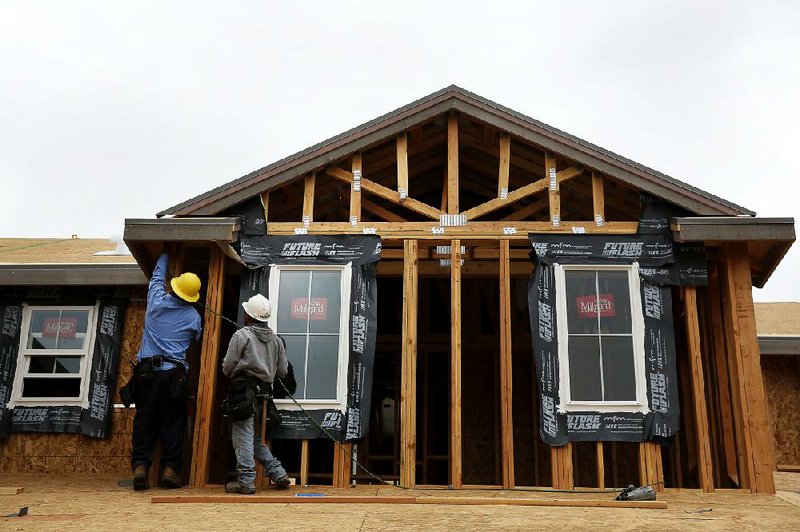WASHINGTON - U.S. home construction fell in January for a second month, but the weakness in both months reflected severe winter weather in many parts of the country. The expectation is that housing will deliver another year of solid gains, helped by an improving economy.
Builders started work at a seasonally adjusted annual rate of 880,000, down 16 percent from December, the Commerce Department reported Wednesday. In December, construction had fallen 4.8 percent. The declines in both months were blamed largely on the weather.
Applications for building permits fell in January for a third month, dropping 5.4 percent to a rate of 937,000.
“The housing market recovery is still intact despite a lot of noise,” said Richard Moody, chief economist at Regions Financial Corp. in Birmingham, Ala., whose projection of 894,000 starts was among the closest in the Bloomberg survey. The industry this year is “not great, but it’s better” than in 2013, he said.
The continued bad weather this month means “we won’t know until probably April at the earliest whether there is some change in the fundamentals,” Moody said.
For all of 2013, housing construction rose 17.7 percent to 976,000 units, the best showing since 2007. Analysts expect further gains this year as stronger job growth increases demand.
For January, both single family and apartment construction fell. Single-family building dropped 15.9 percent to a rate of 573,000 while apartment construction was down 16.3 percent to 307,000.
By region of the country, construction shot up 61.9 percent in the Northeast after two months of declines but was down in every other region of the country. Construction fell 67.7 percent in the Midwest to a record low of 50,000 units at an annual rate. The records go back to 1960. That big decline likely reflected the effect of severe weather in the Midwest in January. Construction was down 12.5 percent in the South and 17.4 percent in the West.
Economists said bad weather likely played a large role in the construction declines.
“Weather in December and January took its toll on housing, and February may not see much improvement,” said Jennifer Lee, senior economist at BMO Capital Markets. She predicted a rebound in construction when spring arrives.
The expectation is that housing construction will rise for a fifth consecutive year, helped by further gains in employment and relatively low mortgage rates. Rates hit record lows in early 2013, but then they started rising as the Federal Reserve sent signals that it might begin to curtail its monthly bond purchases.
The Fed reduced those purchases in December and January, trimming them by $20 billion to $65 billion per month. Analysts expect the Fed will keep reducing the bond purchases in similar $10 billion moves at each meeting this year until eliminating the program in December.
Borrowing costs for home buyers have climbed since mid-2013. The 30-year fixed mortgage rate averaged 4.28 percent in the week ending Feb. 13, up from 3.35 percent in early May last year, according to data from Freddie Mac, the Federal Home Loan Mortgage Corp., in McLean, Va.
U.S. home builders’ confidence in the housing market declined sharply in February, a drop that was blamed on the severe weather battering much of the nation.
Some builders, such as Atlanta-based Beazer Homes USA Inc., remain upbeat about the outlook for demand.
“While housing isn’t the screaming bargain that it was a year ago, it is still highly affordable in relation to household incomes and to alternative rental payment,” Chief Executive Officer Allan Merrill said during a Jan. 31 earnings call.
Sales of new homes jumped 16.4 percent last year to 428,000, the highest level in five years. Sales typically slow in November and December. But this winter’s onslaught of snowfall and freezing temperatures has exacerbated the seasonal slowdown.
Though new homes represent only a fraction of the housing market, they have an outsize impact on the economy. Each home built creates an average of three jobs for a year and generates about $90,000 in tax revenue, according to data from the National Association of Home Builders.
Information for this article was contributed by Martin Crutsinger of The Associated Press and Michelle Jamrisko and Shobhana Chandra of Bloomberg News.
Business, Pages 30 on 02/20/2014

